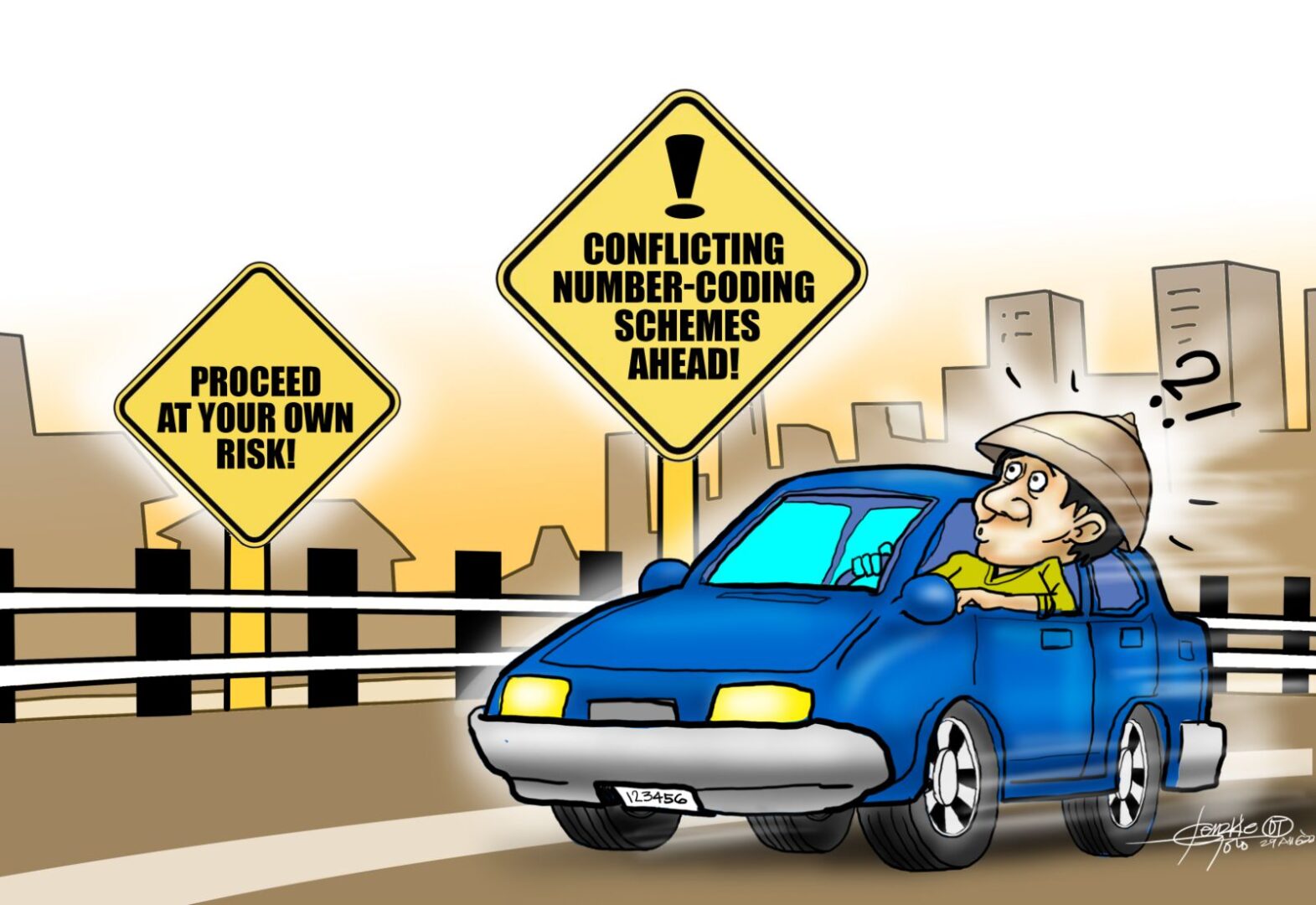A certain very opinionated lawmaker recently hit the Land Transportation Office for allegedly flip-flopping on its stand on the No-Contact Apprehension Policy being implemented by several local government units in Metro Manila.
From first urging mayors in the National Capital Region to suspend the implementation of the NCAP until clear guidelines had been put in place, the congressman said the LTO made a 180-degree turn by saying it could not stop local executives from using closed-circuit TV cameras to catch traffic violators.
The LTO did not withdraw its proposal. If at all, its second statement was an admission that the mayors can choose to ignore the LTO’s suggestion as the local executives are empowered by law to enforce in their respective jurisdictions their versions of the NCAP and whatever traffic rules they deem fit to put into effect.
Here is where Congress must come in to save the public from the conflicting road regulations being enforced by the LTO, the Metropolitan Manila Development Authority and local government units, among other authorities.
The brouhaha over the NCAP is just the latest variation of the mayhem happening on the streets because national government agencies and local government units have never been on the same page when it comes to road regulations, thereby causing a lot of confusion and distress among Filipinos.
Cities and municipalities had been citing the Local Government Code to practically do whatever they want within their boundaries because the premise is they know best the prevailing situations in their localities and, consequently, the interventions needed to solve problems through the passage of ordinances.
But as cities, towns and provinces are interconnected by roads that all serve the general population, the time has come for Congress to pass laws that, at the very least, would force local governments to align their road policies with those established by the national government.
It had always been that ordinances cannot rise above national laws and general state policies, but that’s only in theory as the saying “When in Rome, do as the Romans do” holds true in the respective turfdoms of local government officials.
The need to unify and rationalize road regulations is of great import as taking Metro Manila, for example, its mayors compose the Metro Manila Council and, therefore, should have unified road regulations to be implemented by the MMDA and LGU traffic enforcers.
But no, it has already become pointless to make sense of the MMDA’s traffic rules and those of the LGUs because they are nearly almost always in conflict with one another and are perpetually changing.
To illustrate, look at the numbers-coding scheme supposed to reduce traffic in the metro by 20 percent. As implemented by the MMDA under its latest incarnation, the numbers-coding scheme bars vehicles from traveling, depending on their license plates’ ending numbers, from 7 a.m. to 10 a.m. and then again from 5 p.m. to 8 p.m.
The window from 10:01 a.m. to 4:59 p.m. should allow motorists whose vehicles are covered by the coding for the day — 1 and 2, Mondays; 3 and 4, Tuesdays; 5 and 6, Wednesdays; 7 and 8, Thursdays; and 9 and 0, Fridays — to travel within those hours, but only on main roads overseen by the MMDA.
Good luck on those motorists looking to travel using that window because there are several LGUs that do not recognize it. In as many cities and towns one has to travel through are as many differing rules that motorists can never hope to acquaint themselves with.
Philippine roads have become motorist traps with the NCAP simply making it easier and more lucrative for traffic authorities to make money from fines and penalties not just from undisciplined drivers, but more so from unsuspecting motorists caught unaware by the ever-changing road rules.
